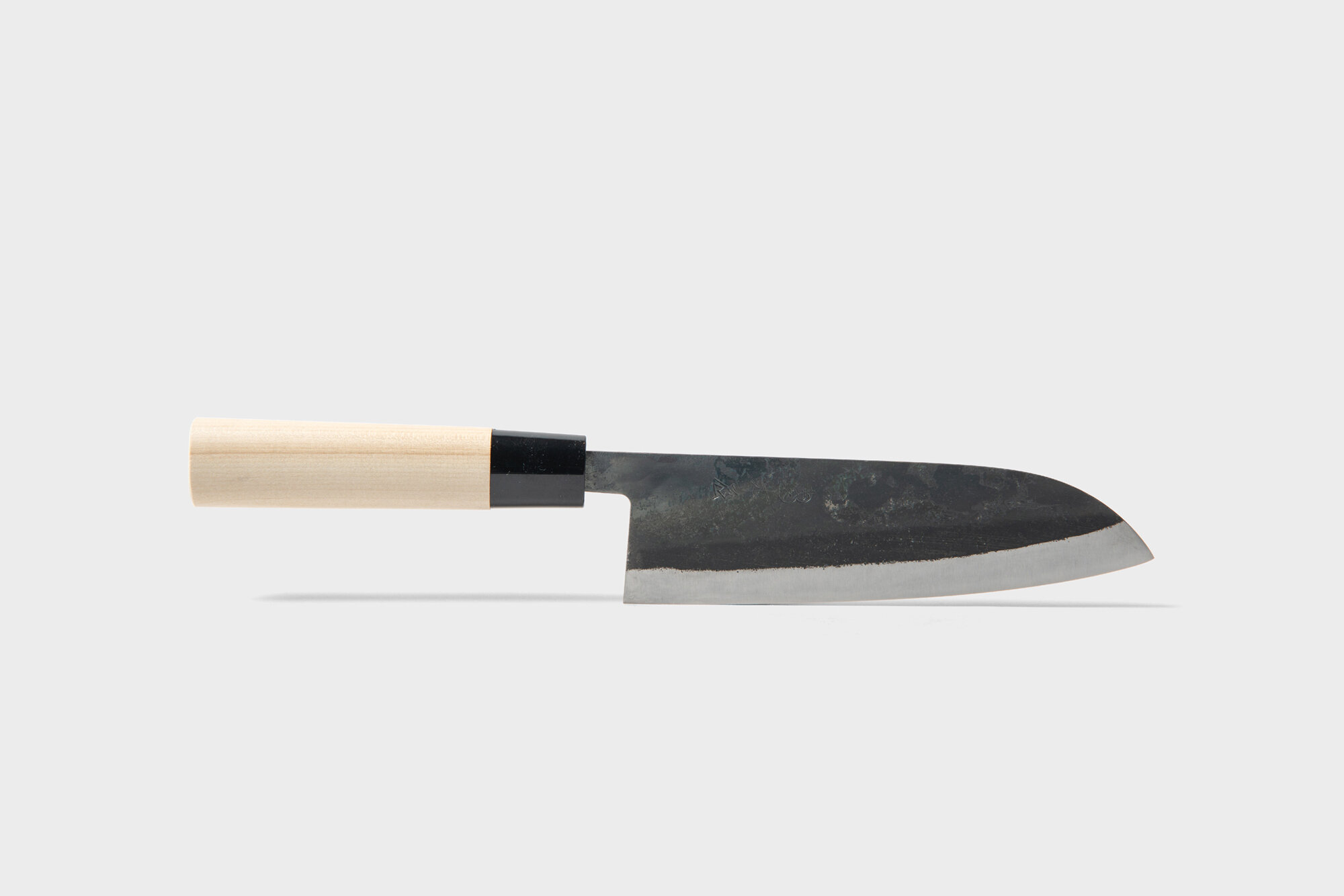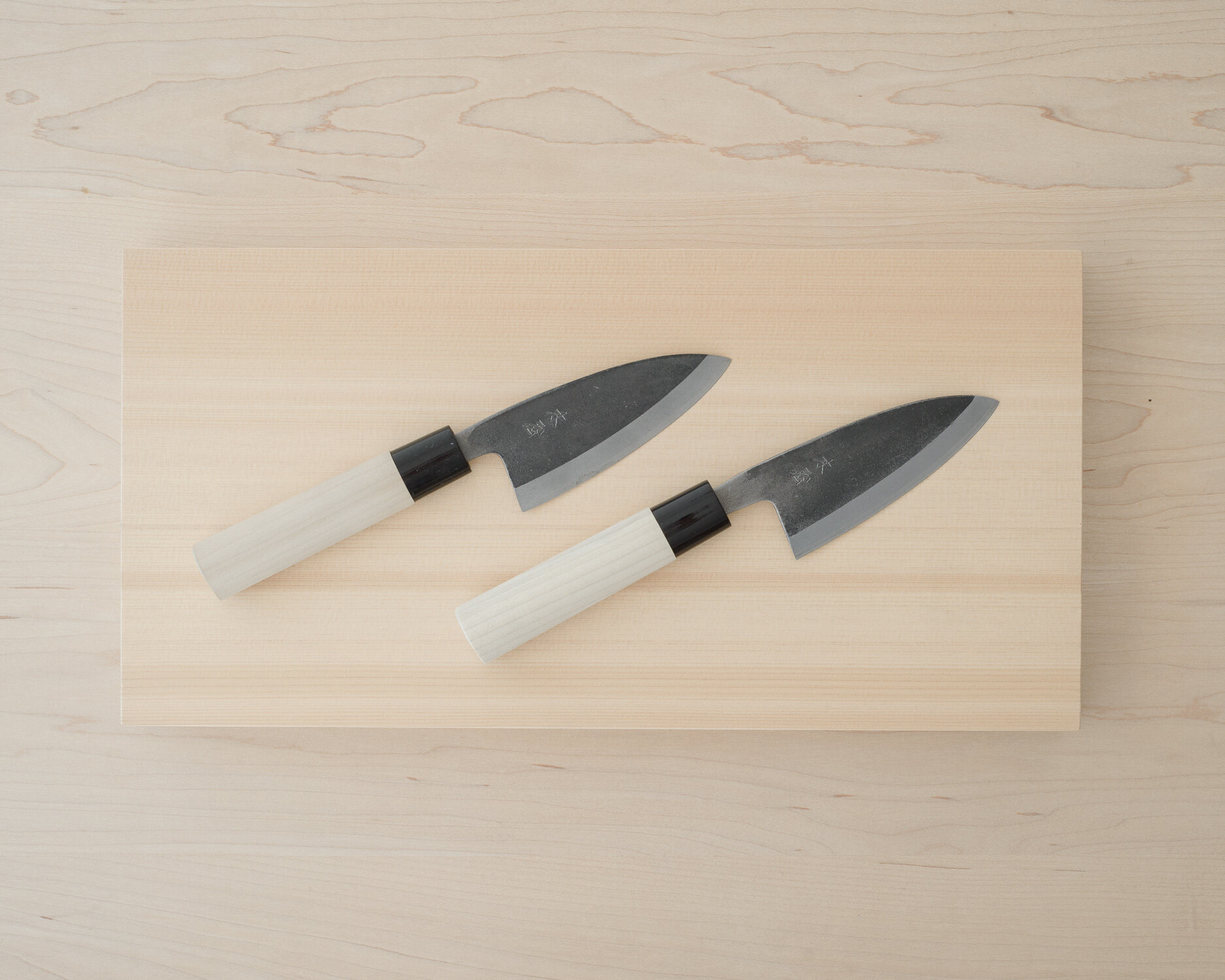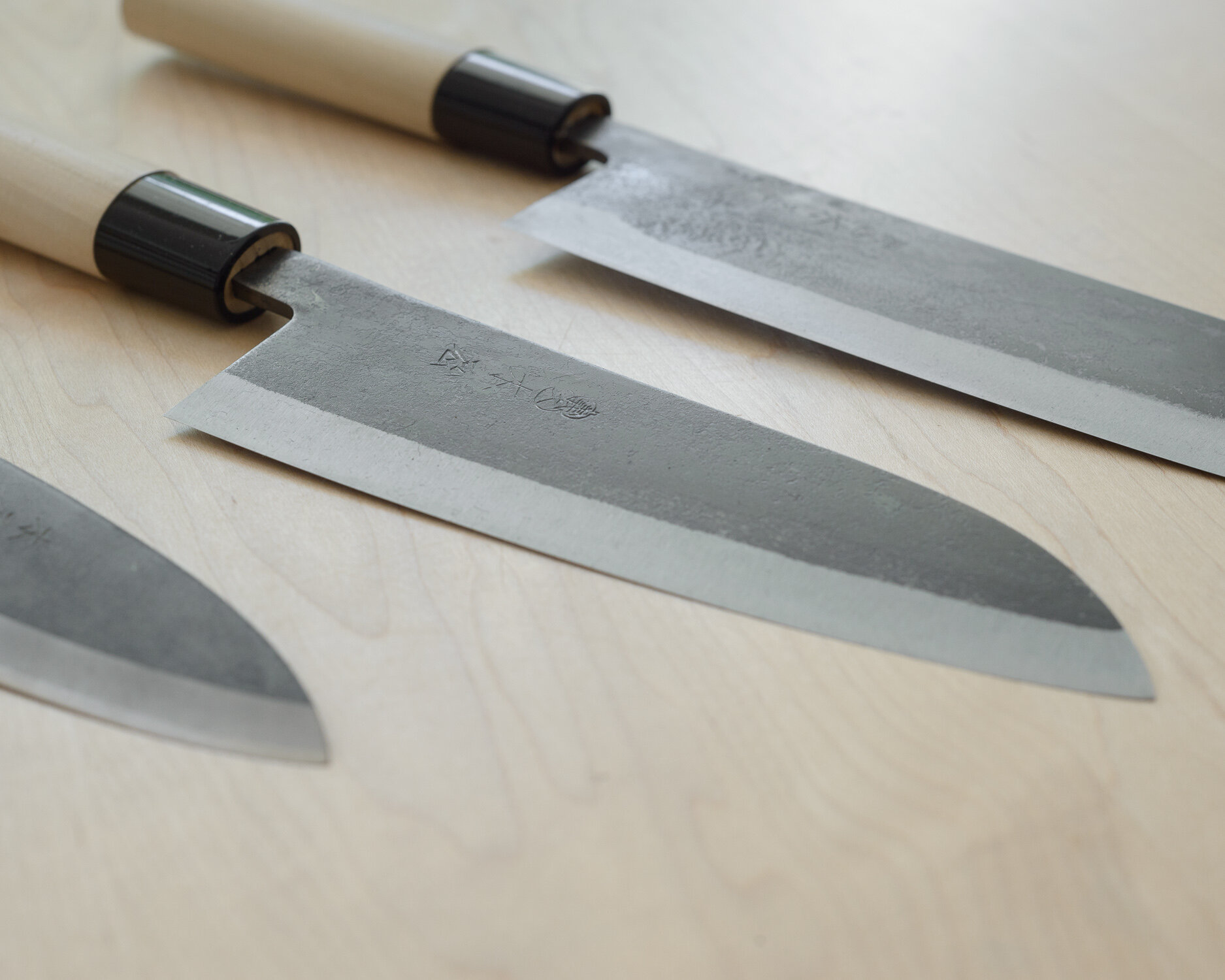Daily Care for Japanese Steel Knives
Introduction to the Japanese Knife
Japanese knives are a prized work of beauty. Encompassing 500 years of crafting history, the tradition of forging knives in Japan stems back to the Sengoku period (1467-1568 CE) and the techniques used in blade forging is deeply rooted in another rich tradition, the art of swordsmithing. The precision craftsmanship of sword-making was applied to the production of domestic kitchen knives, hence why Japan’s master forgers make the world’s finest knives. Today, Japanese knives are heralded by world-class culinary masters, where they are highly sought after due to their precision, sharpness and resilience.
About Japanese Knives
Traditional Japanese knives or Wabōcho (和包丁) are hand forged using a type of high carbon steel called hagane. The production of knives in Japan is centred in the port city of Sakai in Osaka, the leading capital of samurai sword-making since the 13th century. Hagane is a soft steel that was originally used to forge samurai swords due to its ability to hold an exceptionally sharp edge. In the Edo period, strict laws were put into place to regulate the production of swords and it later became banned altogether in the Meiji Restoration (1868), along with the dissolution of the samurai class. Left without work, the skilled swordsmiths saw this as an opportunity to adapt their skills and shift their production from swords to kitchen knives.
The two classic forging methods that developed were the Honyaki and Kasumi. Kasumi knives are made from forging hagane and jigane (soft iron), which results in a soft-bodied knife that is easier to maintain (and economical) for domestic use. Honyaki is forged solely from pure high-carbon steel using the same technique for sword-making, thereby making them the highest quality Japanese knives, but also requiring frequent sharpening due to the hard blade.
Types of Japanese Knives
Japanese knives come in a wide array of shapes, sizes and types to suit specific uses. While there are as many as a hundred types of Japanese knives to choose from, it is recommended to purchase a knife based on what it will be handled for, how much care will be given to the knife and selecting a quality that best suits your level of skill. Here is an essential guide on the classic types of traditional Japanese knives for someone looking to start their own collection.
Nakkiri Knife (菜切り包丁)
The Nakkiri knife (meaning “cutting greens”) is a rectangular, double bevel knife that is traditionally used for cutting vegetables. This is a classic knife that is most commonly used in the Japanese kitchen, with a straight and sturdy blade edge that is ideal for chopping, slicing and mincing soft or hard vegetables. This knife is adapted from the single bevel Usuba-bōcho, but designed with a double edge to make it easy to handle and sharpen for home use.
Usuba-bōcho (薄刃包丁)
The Usuba-bōcho (meaning “thin blade”) is a single bevel knife that is traditionally used by professional Japanese chefs for cutting vegetables. The usuba has a relatively thin blade in comparison to the nakkiri knife, making it suitable for performing intricate cuts and decorative carvings.
Gyūto (牛刀)
The Gyūto (meaning “Beef Knife”) is an all-purpose knife that is based off the Western chef’s knife. The blade is comparatively thinner and sharper, making it highly versatile for chopping, mincing and slicing meat as well as fish, vegetables and fruit.
Chūdeba-bōcho (中出刃包丁)
The Chūdeba-bōcho is a type of deba knife (meaning “pointed carving knife”) that is used for cutting fish. The deba is a heavy knife with a sharp and thick blade, making it ideal for gutting and filleting fish.
Before First Use
Before first use, make sure to lightly sharpen the blade using a finishing stone. This blade-honing process is called honbazuke. (Most store-bought Japanese knives come with a honbazuke finish, however, it is recommended to check before purchasing as some knives require initial sharpening.)
Daily Care of Japanese Knife
A high-quality Japanese knife requires daily care and attention. Like fine wine, Japanese knives develop character that is unique to the owner’s use and touch. With the right care, they can even become better and sharper over time. To maintain the quality and sharpness of a blade, please follow the guide below for instructions.
Japanese knives are exceptionally sharp with a very thin blade, making them more susceptible to damage if pressed against a hard surface. It is recommended to use a wooden end grain board (Eg. hiba wood, hinoki etc.) to preserve the sharpness of the blade. Avoid marble, glass, bamboo or steel boards as this may chip and damage the delicate blade over time.
Hand wash immediately after each use with a soft sponge and mild detergent.
Dry thoroughly with a clean cloth and store in a cool, dry place.
Black spots, or a grey patina will develop over time through use. This is a natural process and this organic residue serves as a protective coating for rust prevention. However, if the rust appears reddish brown in colour, this is a sign of rust and it should be removed accordingly.
Make sure to sharpen the knife as soon as the blade shows signs of brittleness.
Storage tips: For long-term storage, wipe the blade with tsubaki abura (camellia oil) or olive oil, wrap the knife in newspaper and store in a cool, dry place.
Rust Prevention
While Japanese knives are forged to last a lifetime, they are also prone to rust without proper care and maintenance. Please follow the guide below to ensure their longevity and lifelong use.
Avoid contact with other steel objects as the steel blade is subject to rust.
Wash immediately after use and dry quickly with a clean cloth to prevent rust from forming.
Do not leave to soak for long periods of time (i.e. soaking overnight etc.)
Apply the knife maintenance oil on to the clean blade for rust prevention. After applying the oil, wipe the blade with a clean cloth.
For Rust Removal
Scrub off the rust using a steel wool. For best results, apply the knife maintenance oil on to the blade before scrubbing off the rust.
Sharpening Japanese Knives
In traditional Japanese cuisine, where high emphasis is placed on food presentation, working with a sharp knife is crucial to elevating the taste and texture of food. In a typical traditional Japanese restaurant, a Japanese chef will end their work day by diligently sharpening their precious knives in a zen-like fashion. How often a Japanese knife is sharpened may depend on the frequency of its use. However, to ensure their proper care and maintenance, it is recommended to sharpen a knife at least once a month using a whetstone. For ease of maintenance, a blade should be sharpened as soon as it starts to show signs of dullness.
Japanese sharpening stones can be categorised into three broad types featuring different grits.
Ara-to “荒砥” (Coarse stone) - 120 to 600 grit. This type is typically used first and it is used to correct badly damaged blades. It is effective for repairing chipped blades and setting a new bevel angle, but it is quick to wear down the material.
Naka-to “中砥” (Medium stone) - 1000 to 1500 grit. This type of whetstone is most frequently used to maintain and restore the blade edge.
Shiage-to “仕上げ砥” (Finishing stone) - 3000 grit and over. This type of whetstone is used for polishing and refining a blade edge.
How to Sharpen Japanese Knives
To prepare the whetstone, soak in water for 10-15 minutes. Do not over soak the whetstone as it weakens the quality of the sharpening process. For finer stones, over soaking may result in cracking so it is recommended to only splash water when sharpening.
Lay a damp cloth under the stone to prevent the whetstone from slipping.
Check the condition of the blade before sharpening.
Place the knife on the sharpening stone and hold it at an 10-15 degree angle.
Starting from the base of the blade and moving towards the tip, apply some pressure on the blade using three fingers and push the knife away to the far edge of the whetstone. Lift pressure when pulling the knife back to the edge. Repeat this process several times until an even burr can be felt. While sharpening, apply water to the whetstone when it becomes dry.
Turn the knife over and work on the other side of the blade.
After sharpening, hand wash with water and dry immediately with a clean cloth.
For dull blades, sharpen using the coarse stone, followed by the medium stone and polish using the finishing stone. If the blade is regularly maintained and requires very little sharpening, skip the first step and use the medium stone first.
Caution
Do not heat the blade or expose it to extreme temperatures.
Do not use in a microwave or dishwasher.
Do not use harsh detergents or abrasives such as a metal scrub.
Avoid exposure to direct sunlight.
Always handle with care and keep out of children’s reach





